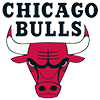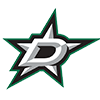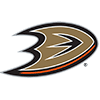Getting an Extra Year of Control
According to the CBA, players are entitled to free agency after six or more years of major league service time. A year of service time is defined as 172 days on a major league roster, but a typical season lasts 183 days. This means that as long as a player is called up with fewer than 172 days remaining in the season, they will be under their current team's control for seven years, instead of six. With most players, this is far more important than saving $10 or $20 million by dodging Super Two status. Good players are going to get paid, but having that extra year of control puts a team in a better bargaining position when they start to talk about a contract extension with the young players, and it also gives the team an extra year right in the middle of that player's prime. April 14 is this year's date when teams can start calling up top prospects (with some notable exceptions) and retain that extra year of control.
Here are this year's top options to be called up shortly after April 14:
Yoan Moncada - After spending 29 days on Boston's active roster last year, Moncada would need to be held down until until May 13 for the White Sox to gain an extra year of control. Unlike with Kris Bryant a couple years ago, Moncada is not overqualified to start the year at Triple-A, despite being the top fantasy
Getting an Extra Year of Control
According to the CBA, players are entitled to free agency after six or more years of major league service time. A year of service time is defined as 172 days on a major league roster, but a typical season lasts 183 days. This means that as long as a player is called up with fewer than 172 days remaining in the season, they will be under their current team's control for seven years, instead of six. With most players, this is far more important than saving $10 or $20 million by dodging Super Two status. Good players are going to get paid, but having that extra year of control puts a team in a better bargaining position when they start to talk about a contract extension with the young players, and it also gives the team an extra year right in the middle of that player's prime. April 14 is this year's date when teams can start calling up top prospects (with some notable exceptions) and retain that extra year of control.
Here are this year's top options to be called up shortly after April 14:
Yoan Moncada - After spending 29 days on Boston's active roster last year, Moncada would need to be held down until until May 13 for the White Sox to gain an extra year of control. Unlike with Kris Bryant a couple years ago, Moncada is not overqualified to start the year at Triple-A, despite being the top fantasy prospect in the game, so this actually works perfectly from both a developmental perspective and a strategic standpoint. The White Sox will likely promote Moncada shortly after May 13 if he is raking at Triple-A and keeping his strikeout rate in check, but they would also be fine keeping him in the minors until June or July if he is not forcing the issue.
Tyler Glasnow - The 6-foot-8 righty spent 65 days in the majors last season, so the Pirates would have to keep him at Triple-A until June 18 if they want to maximize their years of control. Glasnow projects to open the year at Triple-A, and if any team would have the discipline to hold a top prospect down for 10 weeks in order to gain an extra year of control, it would be Pittsburgh. If some combination of Chad Kuhl, Drew Hutchison and Steven Brault can tread water in the last two rotation spots, then that would afford the Pirates with another excuse to keep their top pitching prospect at Triple-A, refining his below average command until mid-June.
Lucas Giolito - The former top pitching prospect in the game spent 40 days in the majors last season with the Nationals, so the White Sox will have to wait until May 24 to promote him to the majors if they want to maximize their years of control. Giolito was pretty awful in a spring outing Tuesday, so his dynasty league value is probably at its lowest point since before the 2013 season.
#WhiteSox Giolito sat at 90 and topped out at 93 this afternoon.
— Bernie Pleskoff (@BerniePleskoff) March 14, 2017
#WhiteSox Giolito done after 2/3 of an inning in the first. He yielded 4 runs so far on 4 hits and two walks-one w/ bases loaded. Yikes!
— Bernie Pleskoff (@BerniePleskoff) March 14, 2017
If you just watched Giolito today, nothing really promising from the outing. Struggled with command, avg velo at best. Didn't locate CB.
— JJ Cooper (@jjcoop36) March 14, 2017
The hope is that this is Giolito working through dead-arm period (as broadcast noted). It's spring.
— JJ Cooper (@jjcoop36) March 14, 2017
Of course, his single-season value is at its highest point, as he figures to spend a good chunk of the season in the majors. The White Sox will be more concerned with getting Giolito back to his 2015 form, but if that happens to align with waiting until late May to promote him, they will jump at the chance to gain a year of control.
Jesse Winker - Winker has yet to debut in the majors, so the Reds simply have to wait until April 14 to promote him and gain an extra year of control. He is criminally undervalued in single-season leagues right now, with an NFBC ADP of 570, going behind the likes of Billy Burns, Robbie Grossman and Aaron Hicks. Winker's power projects to max out in the 15-20 homer range, but he has one of the best hit tools in the minors, and should profile very nicely as the Reds' No. 2 hitter down the road. Scott Schebler and Desmond Jennings figure to open the year in a platoon in right field, with Adam Duvall getting everyday at-bats in left field, but Winker is already a superior option to Schebler/Jennings, so he could be up in April.
Jose De Leon - He isn't quite the caliber of prospect that would have most teams fretting about when to promote him to the majors, but the Rays are the type of organization that needs to gain whatever edge it can, so you can bet they will be cognizant of when they can call up De Leon and gain an extra year of control. After spending 29 days in the majors with the Dodgers last year, the Rays can maximize their control over their newly acquired righty by waiting until May 13 to promote him. Look for Matt Andriese to serve as the fifth starter until De Leon gets the call in mid May.
Super Two Status
Usually a player must have accrued at least three years of MLB service time before being arbitration eligible, but those awarded Super Two status are the exception. If a player has fewer than three years of service time, but more than two AND they rank within the top 22 percent of all two-year players in terms of service time, then that player will become arbitration eligible. Super Two players get four years of salary arbitration instead of the typical three, and for a really good player, this can end up costing the team more than $10 million.
Last year's cutoff for Super Two status was two years, 131 days of MLB service time (written as 2.131). Attempting to manipulate the call-up of a top prospect because of Super-Two fears is a very inexact science, but there is a general range team's can work with. Here are the last five Super Two cutoffs:
2016: 2.131
2015: 2.130
2014: 2.133
2013: 2.122
2012: 2.140
A general rule of thumb is that if a team calls up a prospect prior to June, that player will have a good chance of being awarded Super Two status in a few years.
Considering there is no exact date involved, and it is dependent on what is happening with other players, it is impossible to pinpoint a player's call-up date based on Super Two ramifications. That said, here are some of the top players who could be strategically called up in June or July as their team's look to avoid giving them that extra year of arbitration:
J.P. Crawford - If Crawford is dominating Triple-A pitching and one of Freddy Galvis or Cesar Hernandez is having a mediocre start to the season, then Crawford could be up in mid-May. The more likely scenario, however, is that the Phillies wait until after they estimate the Super Two cutoff has passed in mid-June.
Austin Meadows - Meadows is the toughest prospect to value for 2017, as he has the talent to make a major fantasy impact, but is firmly blocked at the big league level. It is likely that the Pirates will keep him down until September if Andrew McCutchen, Starling Marte and Gregory Polanco stay healthy, but a significant injury to one of that triumvirate could result in the Pirates playing the Super Two game with Meadows.
Josh Hader - I don't love the idea of using the Super Two cutoff to determine the promotion of pitching prospects, but the Brewers don't have any reason to rush Hader to The Show, so it could come into play. This would mean at least a couple more months in the harsh pitching conditions at Triple-A Colorado Springs, so his numbers might not look shiny at the time of his promotion, but he has the stuff to pile up the strikeouts right away, likely struggling with his pitch efficiency.
Brent Honeywell - The Rays are as price-conscious as any MLB organization, so saving a few million dollars by limiting Honeywell to just three years of arbitration seems likely. He has a very advanced repertoire and should find success right away in the majors this summer.
Tyler Beede - Beede's readiness for the majors and the Super Two cutoff might align, making it an easy decision for the Giants to hold him down until at least mid-June. If he is doing a good job limiting baserunners in the Pacific Coast League and the Giants are having a tough time getting productive starts out of the fifth spot in the rotation, look for Beede to debut early this summer. He has mid-rotation upside.
Ozzie Albies - The Braves have tabbed Albies as their second baseman of the future, but the acquisition of Brandon Phillips could delay his ascension to everyday big leaguer status. There is no reason he would be promoted before the Super Two cutoff has passed, and unless he is really forcing the issue, he could be held down until the All-Star break. Albies will offer plus speed and an excellent hit tool, but will likely hit at or near the bottom of the lineup when he debuts.
Clint Frazier - The Yankees don't currently have an opening for Frazier to get everyday at-bats, but given the age and injury history of some of their veterans and the high-risk profile of Aaron Judge, a spot should open up at some point around the Super Two cutoff date. Frazier has the potential to be a five-category monster long term, but he may struggle initially against big league pitching.
Lewis Brinson - Considering he will be playing half his games in Colorado Springs once again, Brinson's numbers are likely to lead to him being one of the top stash candidates early in the season. That said, the Brewers don't yet have an opening for him, and barring an injury, major regression from Keon Broxton, or a Ryan Braun trade, there won't be an opening anytime soon. Even though his home numbers will likely be gaudy at Triple-A, Brinson is not a finished product at the plate, and could stand to refine his approach against minor league pitching for most of this season.
Bradley Zimmer - Zimmer has been impressive this spring, but will likely open the year back at Triple-A Columbus. The Indians' outfield is as shaky as it gets for a contending team, so they will undoubtedly need reinforcements in the first couple months. That said, the Indians are a very money-conscious organization, and will likely do everything in their power to let the Super Two deadline pass before promoting Zimmer. He could be a batting average drain, at least initially, but should contribute in power and speed.
Franklin Barreto - The A's have never been shy about promoting prospects, even though they pinch pennies in every other aspect of their operation. That said, Barreto is unlikely to be ready for a promotion to the majors until June or July at the earliest, so they should be able to dodge a fourth arbitration year. His move to second base is already in the works, and nobody is standing in his way on the big league roster. In time he will hit for a high average and steal 20-30 bases while offering modest power contributions.
Cody Bellinger - The Dodgers love Bellinger's bat, and seem likely to find a spot for him when he's ready, which could also align with the Super Two cutoff. He is an option in the outfield corners and could also get some starts at first base against southpaws. His batting average may be lower than many expect early on, but the power should be there from day one.
Chance Sisco - Catcher is such a weak position that if I knew Sisco would be up this summer, I'd be fine with him as my second catcher in deep two-catcher redraft leagues. His bat is close to big league ready, and while his defense is now passable, that will be his primary focus at Triple-A. If he is impressing early on, he could take over the strong side of a catching platoon with Welington Castillo in late June or early July.
Willy Adames - The Rays like to barbecue their prospects (slow and low), especially on the pitching side, but Adames is the rare standout who could be moved a bit more aggressively. The Matt Duffy experiment at shortstop has any number of potential outcomes, one of which is that he gets replaced by Adames this summer. There's basically no chance he will be up until after the Super Two cutoff, however. He has 25-plus homer power and could hit .270-.285 while sticking at shortstop.
Amed Rosario - It's really pretty remarkable how much Rosario has improved his stock from this time last year. Everyone always knew the potential, but he redefined what it means to have a breakout season in 2016. There is nowhere for him to play right now, but if Neil Walker or Asdrubal Cabrera get hurt this summer, look for Rosario to leap over the half dozen Quadruple-A middle infielders in the Mets organization and start everyday at shortstop without looking back. He has five-category potential, but speed will be his primary contribution early on.
Nick Williams - This is a huge year for Williams, as all of his warts were on full display toward the end of last season. None of the Phillies' big league outfielders can match his physical gifts, but he needs to put together better at-bats in order to maximize his tools. If he is raking against Triple-A pitching but is still showing a poor approach, he could be promoted before the Super Two cutoff with the expectation that he will fail against big league pitching and get sent down with a to-do list, a la Javier Baez and Joey Gallo in recent years.
Kevin Newman - Newman is the Pirates' shortstop of the future, and entering his age-23/24 season, it would not be surprising if the Pirates pushed him to the majors this summer if he is holding his own against Triple-A pitching. He won't do much in terms of counting stats, at least not right away, but he has an excellent approach and a great hit tool, which should allow him to have immediate success after his promotion.
Rowdy Tellez - Perhaps more than any other player on this list, nobody is standing in Tellez's way. Justin Smoak and Steve Pearce will be platooning at first base early in the season, but Smoak is a terrible hitter by first base standards and Pearce can play the outfield, so if Tellez is mashing Triple-A pitching, he could be up this summer. The new Blue Jays regime is incredibly cost-conscious, so they won't consider calling up Tellez until after the Super Two cutoff has passed.
Others who could come up after the Super Two cutoff: Casey Gillaspie, Sam Travis, Derek Fisher, Greg Allen, Matt Chapman, Jake Bauers, Dominic Smith, Christian Arroyo, Dustin Fowler, Tyler O'Neill, Gleyber Torres, Zack Collins, Francis Martes, Brandon Woodruff



























